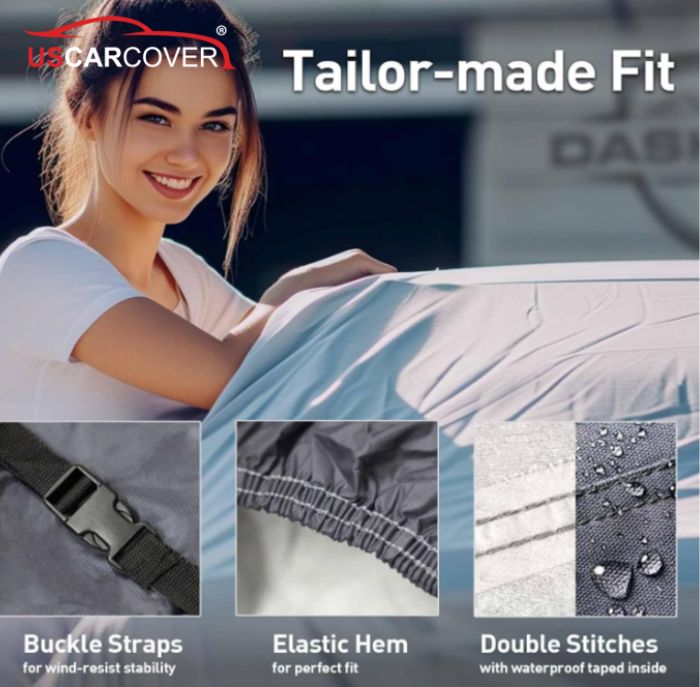
Jensen car cover is not just a “rain-and-sun sheet.” It is a portable microclimate wrapping your Jensen Interceptor, FF, C-V8, or Jensen-Healey, where each fabric layer, each cut, and each hem works to manage water, wind, dust, heat, and humidity. Classic cars carry the beauty of wraparound glass, dark wood veneer, supple Nappa leather, and deep chrome. Those evocative materials are far more sensitive to UV, salty humidity, fine dust, and repeated friction. If you only “put out fires” after damage shows up with washing, polishing, or de-spotting, you are always late. The sustainable path is to manage the conditions that cause damage from the start: let vapor escape instead of being trapped under the cover, make the fabric meet the surface with a cushioned touch instead of abrasion, keep the cover still in wind instead of ballooning and collapsing, and cut UV before it reaches paint, glass, and cabin surfaces.
Related Articles: Jeep car cover: protection from red mud, desert dust, showers, and snow in one solution
Overview of Jensen and the flip side of classic beauty: why you need protection that works by mechanism
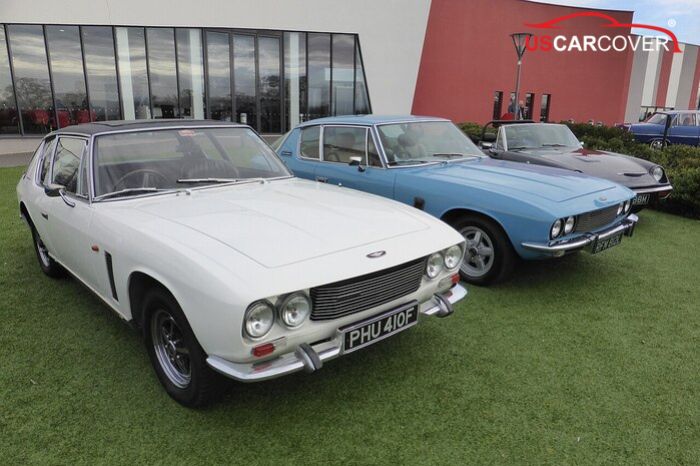
Mention Jensen, and you think of British handcraft: elegant proportions, curved glass hugging the cabin, wood veneer with depth, and that unmistakable leather aroma. Handcraft also means paint and interior adhesives are often thinner than modern standards, veneer has fewer protective coats, curved glass records mineral halos easily, chrome is sensitive to salty humidity, and Nappa leather can crack under thermal shock. Every noon under harsh sun, every damp night, and every dusty breeze is a tiny “unit of impact” that accumulates into noticeable change by season. The deeper reason is not any single incident but a loop of repeated conditions: long wet times that dry fast and print minerals on glass, trapped humidity that breeds odor, wind that makes a loose cover swell and collapse and drag dust on paint, UV that ages polymers in leather and adhesives. A well-designed outdoor car cover for Jensen intervenes at each link: one-way breathability to let vapor exit, an ultra soft lining so every contact is cushioned, a custom-fit form so the cover stays still in wind, a stable UV shield so radiation is stopped at the cover’s surface, and a beading outer skin to shorten wet time on glass and paint.
Related Articles: Jaguar car cover: protecting Nappa leather, wood veneer, and panoramic glass to preserve color
Breathability combined with custom fit: the foundation for controlling moisture and eliminating micro movement
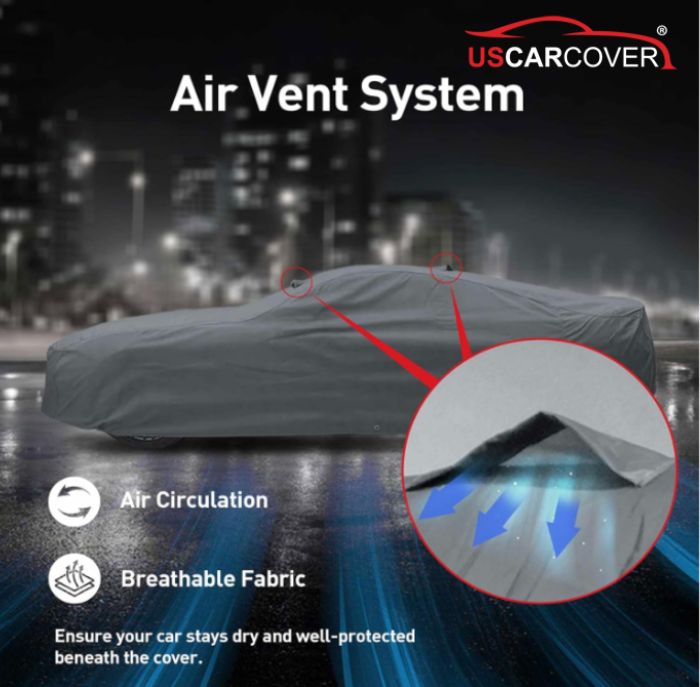
Many owners prioritize “total waterproofing,” yet experience with classics shows trapped humidity is the root of musty odors, dull chrome, faded veneer surfaces, and aged seals. Real breathability does not let rain come down. It lets vapor go out from underneath. When the underside stays dry day after day, you break the humid greenhouse around the classic interior. The cabin is less stifling, odors fade, and the durability of adhesive–wood–leather assemblies improves.
In parallel, custom-fit for Jensen is the link that eliminates micro movement. Wraparound glass and deep body curvature let generic covers form air pockets. Wind pumps those pockets, and the cover swells then collapses, pulling fine dust across paint and glass like ultra-fine sandpaper. A day here, a day there, and by the end of a season you see a mesh of micro swirls under slant light. When the cover is cut to the exact geometry of each Jensen model, tension and slack are distributed correctly, seam edges are recessed at transitions, and soft hems sit against upright glass. The cover stays still in wind. Without repeated motion, fine dust is not “held” and rubbed across paint. The remaining contact becomes the cushioned touch of the ultra soft lining.
The immediate effect of the breathability + custom-fit duo is that you stop wrestling with musty smells, mineral rings, and accumulated micro swirls. What you see each morning is clear glass, paint free of random specks, deep chrome, and a cabin that smells like leather instead of damp air.
Related Articles: Isuzu car cover: Is it really necessary to handle night rain, early sun, and daytime dust
Soft lining: the non-negotiable when paint is vintage, veneer is thin, and glass is curved
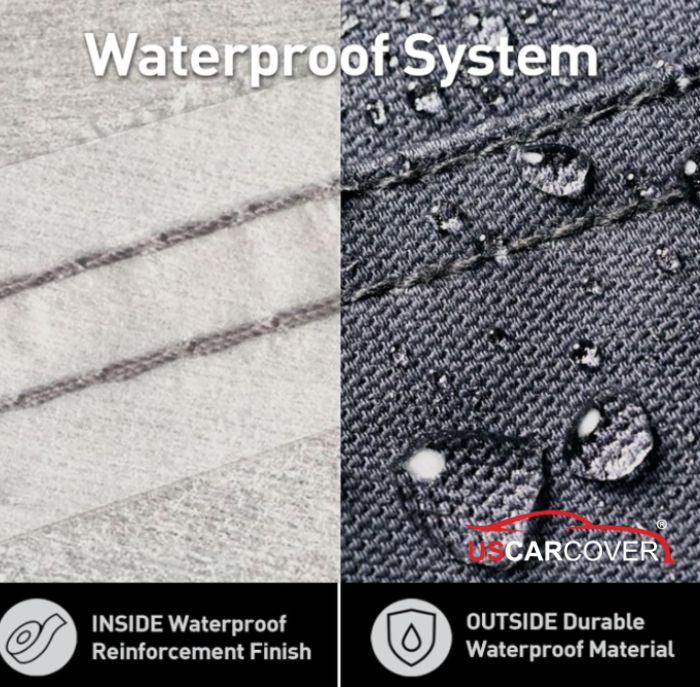
"Scratch protection” for classics cannot be solved by the single word “thickness.” A thick but coarse fabric can still turn fine dust into tiny blades. A soft-lined car cover solves the right problem: it turns micro impacts into cushioned touches, so fine particles lose their cutting ability, especially at sensitive zones like curved glass, arch lips, door edges, and roof seams. On Jensen, where classic paint is thinner and softer than modern standards, veneer has thin protective coats, and chrome can haze from light abrasion, the soft lining acts like a “micro shock absorber” between fabric and surface.
The benefit does not stop at exterior panels. When you put on and remove the cover with a light touch on a soft lining, you reduce mechanical jolts transmitted to the cabin. Classic interiors are sensitive to thermal shock and UV. With less “mechanical agitation,” Nappa leather and veneer keep tension and depth longer. If your car has a soft top with soft windows, soft lining plus a stable form is mandatory to avoid dull rub marks that are hard to reverse.
Related Articles: International car cover: comprehensive protection, small investment for big savings
UV shielding: stopping radiation at the cover surface so interiors keep their color through American summers
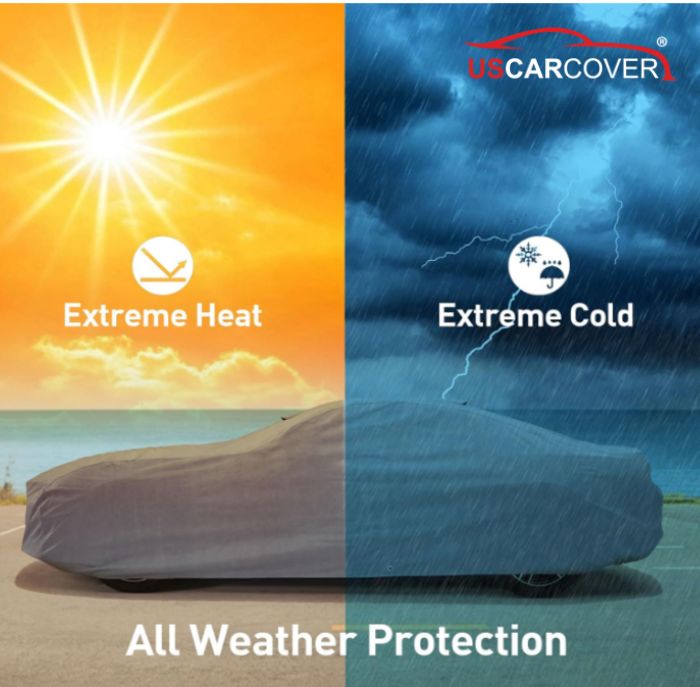
UV is the “invisible enemy.” You do not see it hitting veneer and leather, but its signature shows in fading, stiffening, hairline cracks, and lost depth. Slant sun through wraparound glass makes the problem obvious. A UV-shielding car cover fights at the front line. The outer layer absorbs and reflects a large share of radiation before it reaches paint, glass, and interior. When UV is cut, cabin temperature drops too. Lower thermal shock means leather cracks less, veneer fades less, and adhesives age more slowly.
A useful side effect of UV shielding is reduced need for heavy-handed restoration. You do not “rescue” with strong conditioners and frequent polishing. You maintain with light dusting, gentle cleaning, and modest conditioning. For curved glass, UV shielding plus a beading surface makes droplets gather and slide quickly, shortening wet time and preventing minerals from crystallizing into white rings. Wipers chatter less, visibility stays crisp, and you avoid harsh chemicals for de-spotting.
Scratch prevention that actually works: eliminate repeated friction, not just add thickness
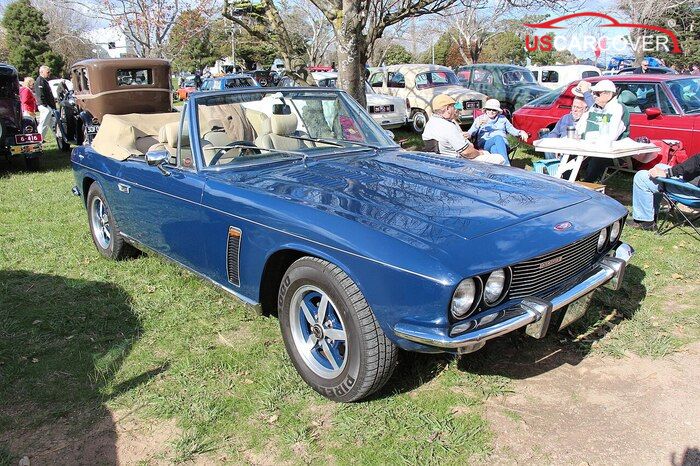
Most micro swirls come from very small repeated friction: the cover swelling and collapsing in wind, hurried sideways pulls during handling, or stiff fabric dragging on a dry dust grain. To deliver true “anti-scratch,” three elements must operate together:
- A stable form so balloon–collapse cycles disappear. Geometry cut for Jensen, recessed seams, soft hems, and smart anchors keep the cover still in wind.
- An ultra soft lining so contact is cushioned, turning “cuts” into “rolls"
- Light handling with a clear routine: let fabric fall in its natural direction, avoid sideways dragging, align to body lines so the cover hugs.
Done right, paint does not “web” under sun, glass does not show ghostly halos, chrome keeps “depth,” and you exert less effort since the cover becomes truly easy to use.
Related Articles: Infiniti car cover: a proactive solution against harsh sun, showers, fine dust and humidity
Choose a Jensen car cover by U.S. climate and parking habit: start from reality, arrive at the right configuration

The key to choosing well is answering three questions: where you park, how long, and under what conditions:
- Sun Belt, harsh sun. Prioritize stable UV shielding and a radiant outer surface, combined with breathability so the cabin does not stew. For 30 to 90 minute midday stops, a Jensen half cover shading glass and roof cools fast. For long or overnight parking, a Jensen full cover also locks out dust and wind.
- Pacific Northwest, long rain and morning sprinklers. Emphasize beading to shorten wet time and breathability so the underside stays dry. After rainy stretches, crack one edge for a few minutes to exchange air, then close.
- Gulf Coast and coastal salty humidity. Breathability is mandatory to avoid a salty greenhouse. Keep the habit of shaking off salt, fresh-water rinsing, and air drying after days of sea breeze.
- Snow Belt, snow and road salt. Combine strong beading with a stable form so salt and ice crystals are not scuffed around. Always shake salt off before rolling the cover.
- High plains wind and desert dust. Emphasize a stable form, recessed seams with soft hems, and a soft lining to eliminate repeated friction in gusts.
If your car rests mostly in a garage, an indoor Jensen cover with soft lining and moisture balance is the focus. If you park on the driveway, an outdoor Jensen cover needs the full set of UV shield, beading, breathability, and stable form. Frequent short stops favor a half cover that is easy to handle. Overnight or outdoor storage calls for a full cover.
Related Articles: Ineos car cover: Always protect your vehicle in every harsh environment
Coordinate full cover and half cover: assign the right roles so use is easy and consistent
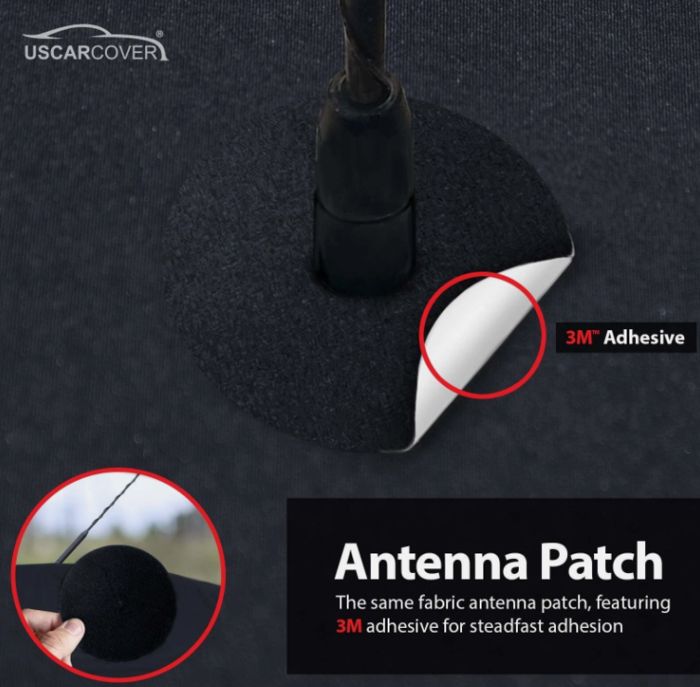
There is no “one size fits all.” A Jensen half cover is the quick-action tool for 30 to 90 minute daytime stops. It shades glass and roof to cool the cabin and blocks direct UV and falling dust. A Jensen full cover shines when you park long or overnight, locking dust, wind, humidity, and salt at the same time and stabilizing heat and moisture around the vehicle. Assigning the right role makes the cover easy to use. Ease leads to consistent use, and consistency is how protection compounds week by week and season by season.
Related Articles: Hyundai car cover: New fabric technology for sun, rain, snow and scratch protection
Where to buy a reputable Jensen car cover
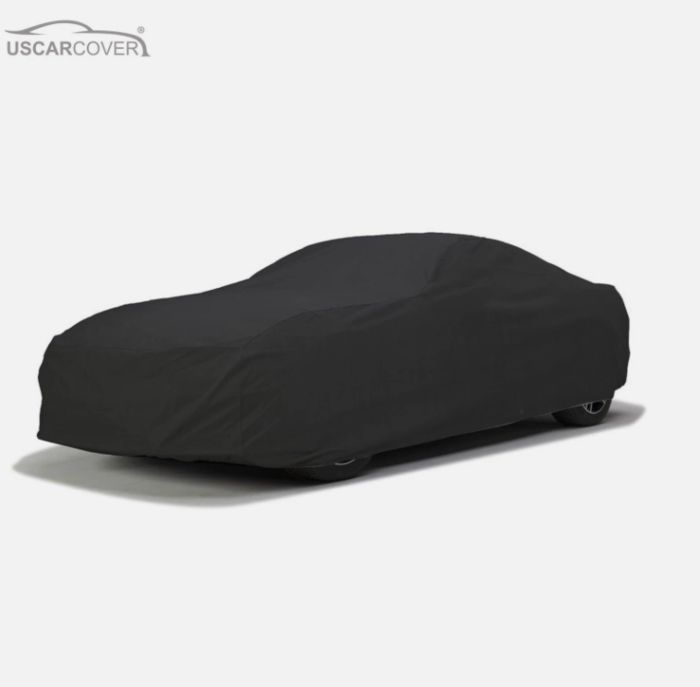
A great Jensen car cover is not only fabric and stitching. It is a mechanism set that fits your climate and usage in the United States. At US Car Cover, outdoor Jensen configurations are built with a stable UV shield, a beading surface that makes droplets round and slide quickly, a one-way breathable core so the underside stays dry, an ultra soft lining that is safe for classic paint, hard and soft glass, and chrome, plus a custom-fit form for each Jensen model. If you store the car in a garage, an indoor Jensen cover emphasizes cushioned contact and moisture balance to stop fine dust and musty odors. Guidance starts from where you park, how long, and local climate, then moves to full cover or half cover. When mechanisms are right and the form is true, putting on and removing the cover takes one to two minutes. That ease makes you use it consistently, which lets protection compound over time.
Long-term value: a small investment today that cuts repair bills tomorrow
Every “rescue job” has a cost. Polishing to remove micro swirls thins the clear coat. De-spotting glass takes time and risks micro scratching. Brightening chrome repeats if salty humidity is not blocked. Leather and veneer demand heavier treatments if UV still hits every morning. Headlamp correction or replacement takes the car out of service. When a Jensen car cover cuts UV, water, humidity, wind, and dust at the source, the frequency of those jobs drops. You save time, preserve value at resale, and, more importantly, each time you open the door, it feels like Jensen again: clean, subtly fragrant, and cool to the touch.
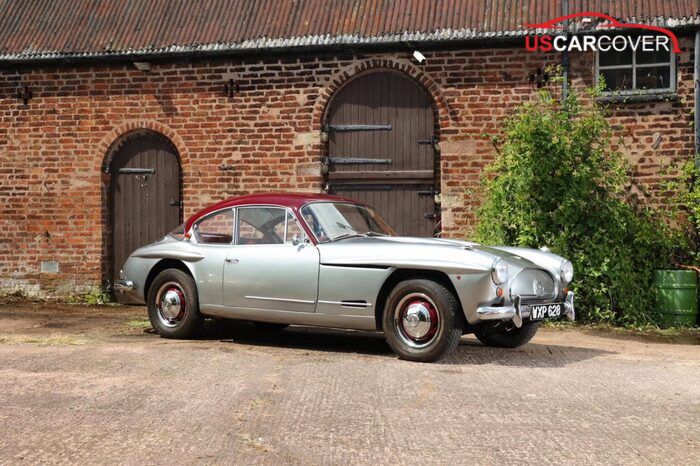
Related Articles: Hupmobile car cover: full coverage, interior protection, anti-mold and anti-rust to keep your car looking new
Four qualities, one system, one goal
Seen individually, you have breathability to break the humid greenhouse, a soft lining so every contact is cushioned, UV shielding to keep interiors in color, and a custom-fit that holds the cover still in wind. Combined, these four qualities become one system running smoothly on a Jensen car cover. Droplets slide fast so glass does not print rings. Vapor escapes so the cabin has no odor. UV is cut so veneer and leather do not fade and crack. The cover stays still so repeated friction does not create micro swirls. One goal remains: preserve the classic spirit of Jensen in modern daily life. Open the door, and it still smells of leather. Look through wraparound glass, and it is still clear. Touch the veneer, and it is still warm and smooth. Step back, and the body still has deep gloss under the sun. That is when a small investment in a Jensen car cover becomes large savings on polishing, de-spotting, interior care, and long-term value
